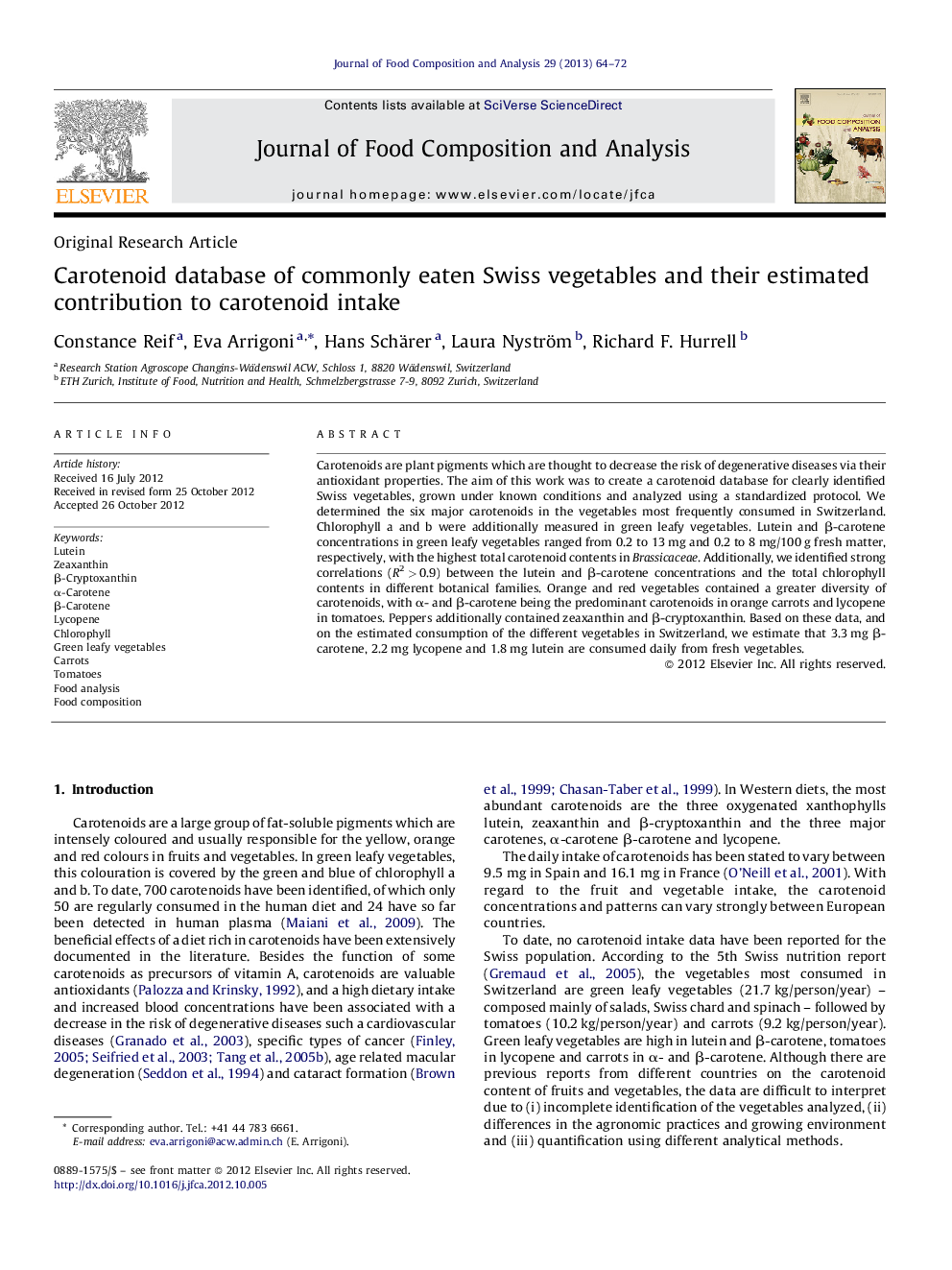| Article ID | Journal | Published Year | Pages | File Type |
|---|---|---|---|---|
| 10552836 | Journal of Food Composition and Analysis | 2013 | 9 Pages |
Abstract
Carotenoids are plant pigments which are thought to decrease the risk of degenerative diseases via their antioxidant properties. The aim of this work was to create a carotenoid database for clearly identified Swiss vegetables, grown under known conditions and analyzed using a standardized protocol. We determined the six major carotenoids in the vegetables most frequently consumed in Switzerland. Chlorophyll a and b were additionally measured in green leafy vegetables. Lutein and β-carotene concentrations in green leafy vegetables ranged from 0.2 to 13 mg and 0.2 to 8 mg/100 g fresh matter, respectively, with the highest total carotenoid contents in Brassicaceae. Additionally, we identified strong correlations (R2 > 0.9) between the lutein and β-carotene concentrations and the total chlorophyll contents in different botanical families. Orange and red vegetables contained a greater diversity of carotenoids, with α- and β-carotene being the predominant carotenoids in orange carrots and lycopene in tomatoes. Peppers additionally contained zeaxanthin and β-cryptoxanthin. Based on these data, and on the estimated consumption of the different vegetables in Switzerland, we estimate that 3.3 mg β-carotene, 2.2 mg lycopene and 1.8 mg lutein are consumed daily from fresh vegetables.
Keywords
Related Topics
Physical Sciences and Engineering
Chemistry
Analytical Chemistry
Authors
Constance Reif, Eva Arrigoni, Hans Schärer, Laura Nyström, Richard F. Hurrell,
